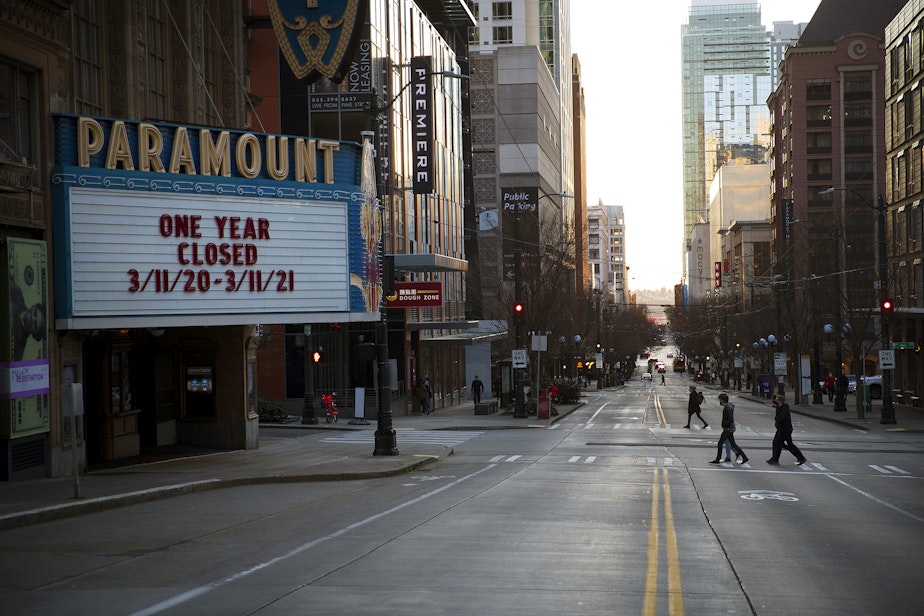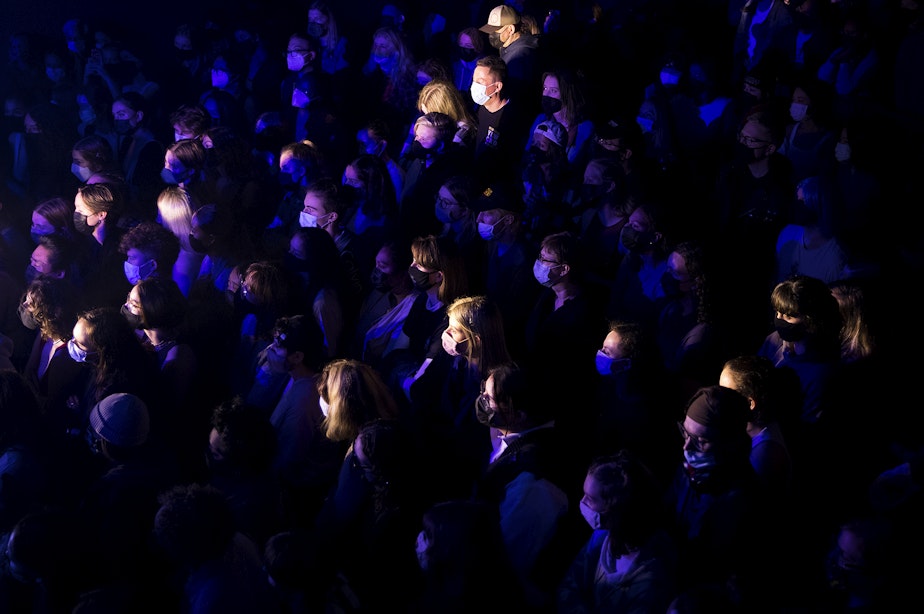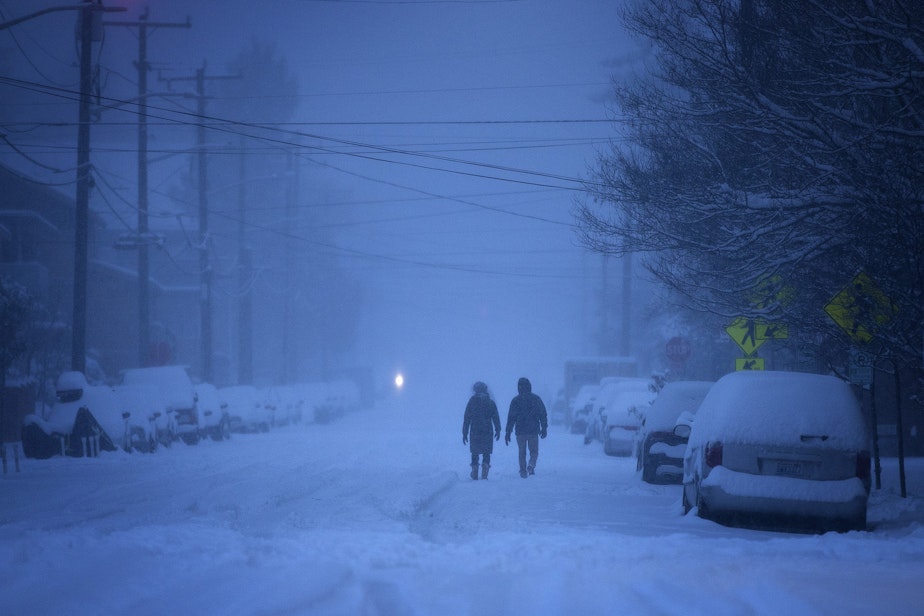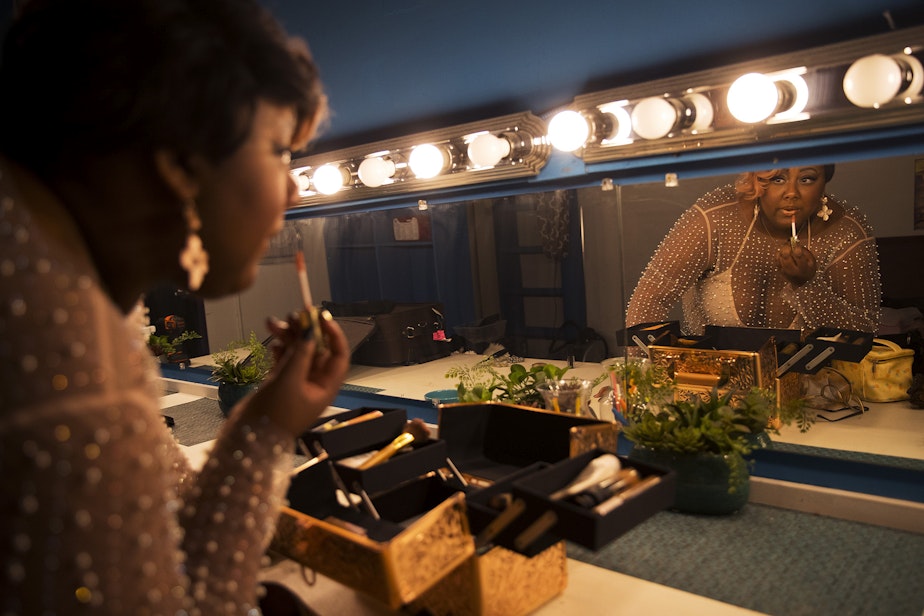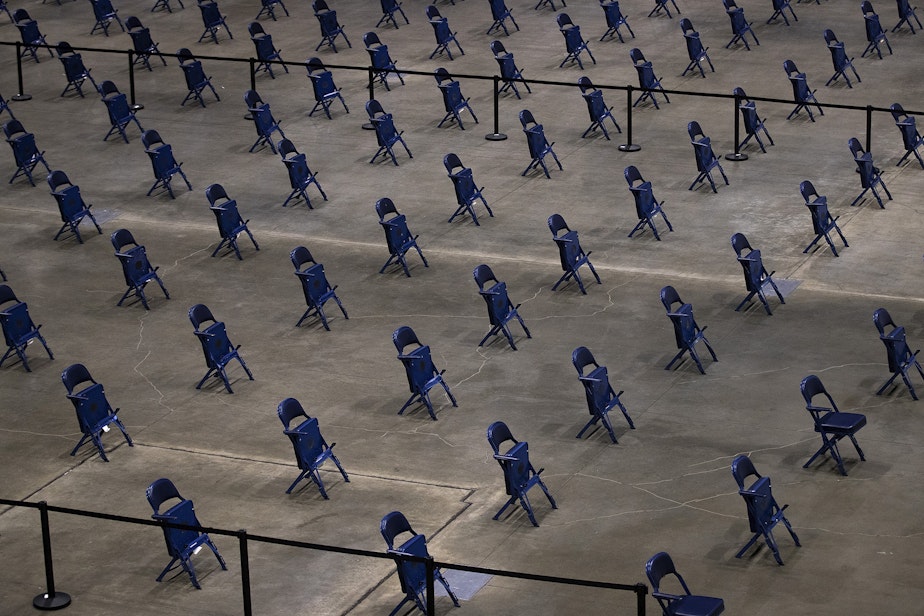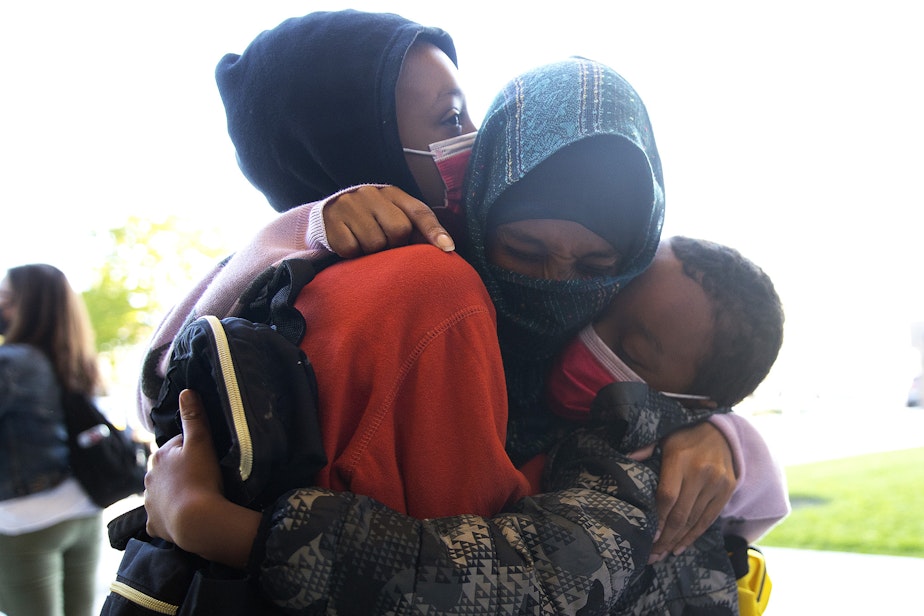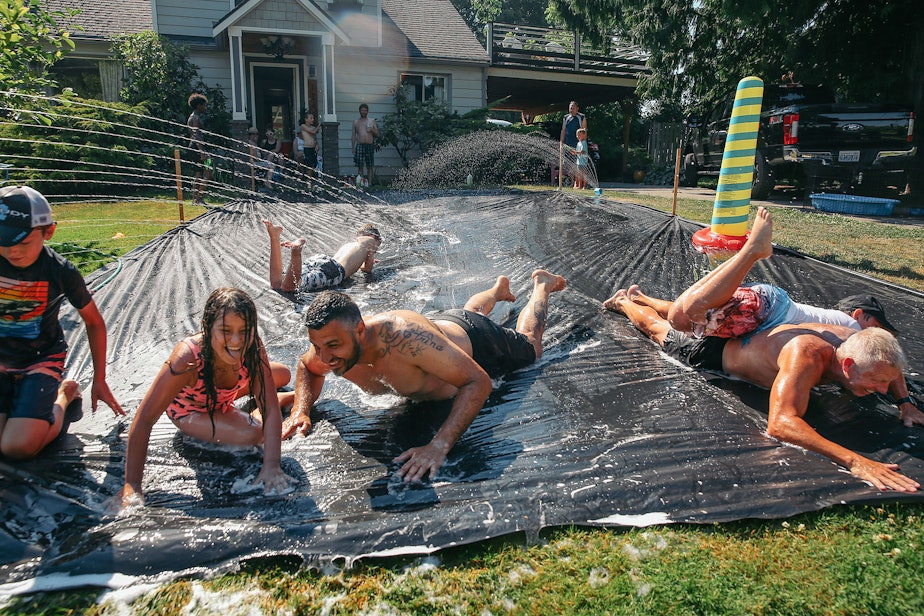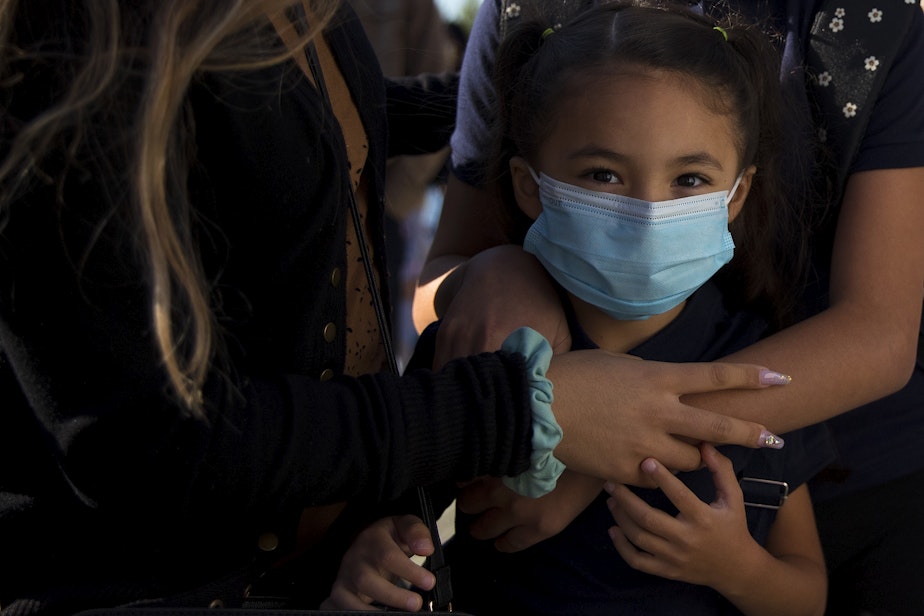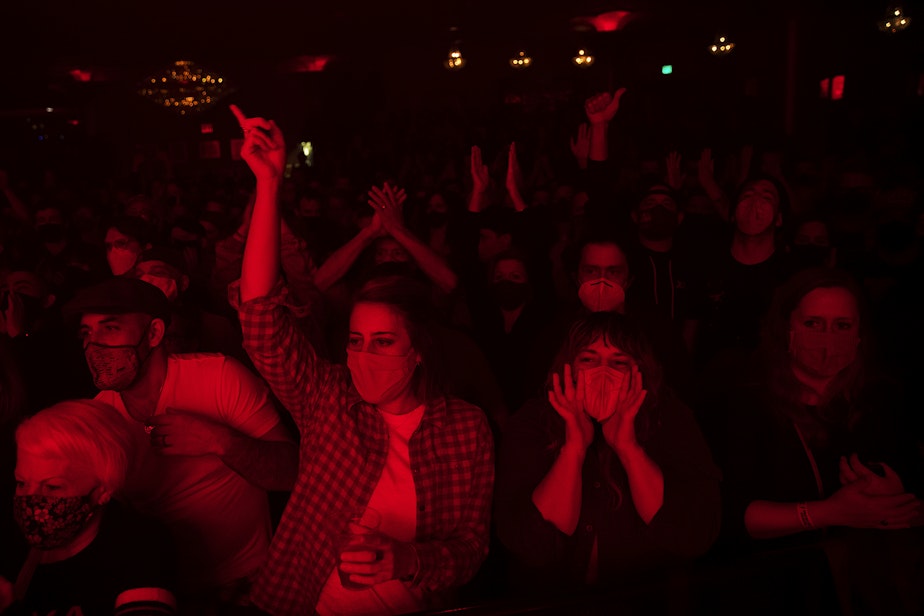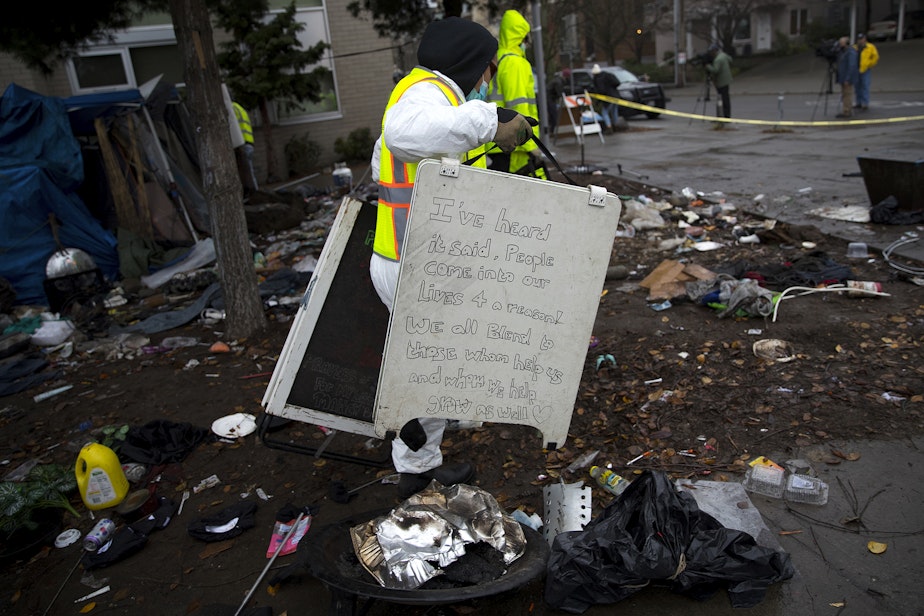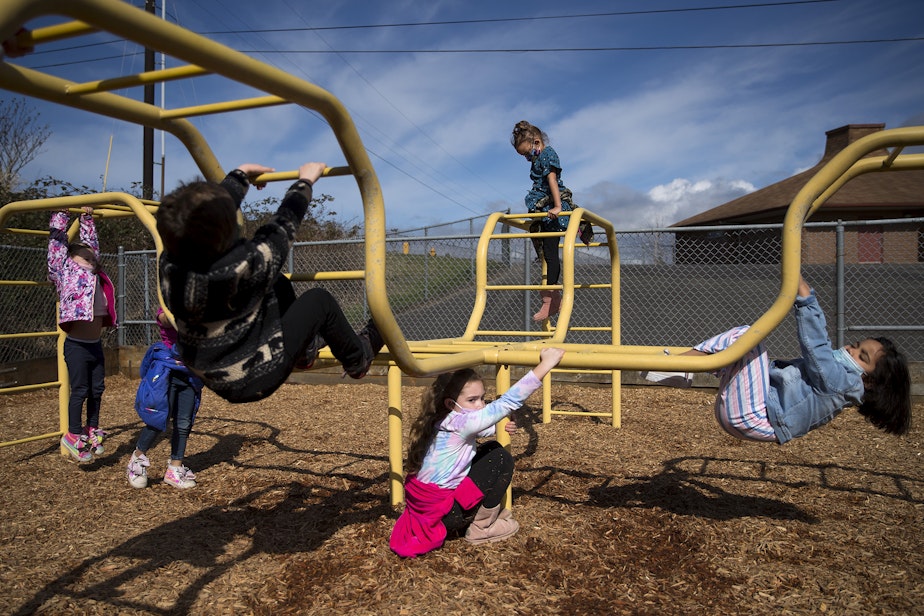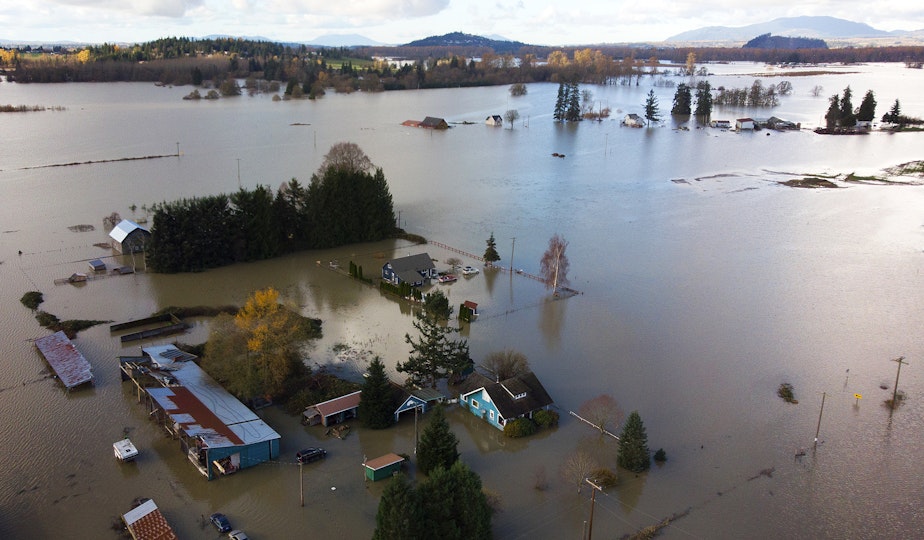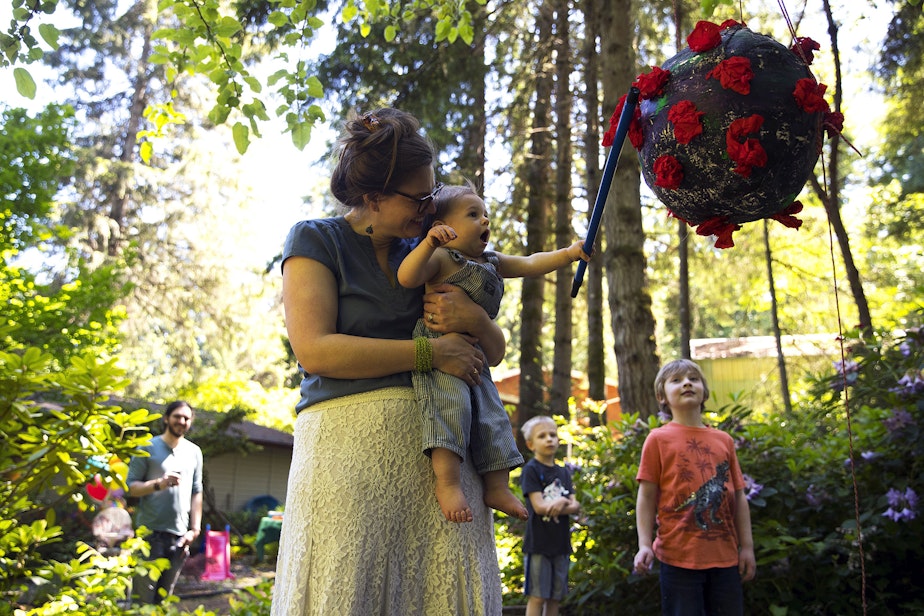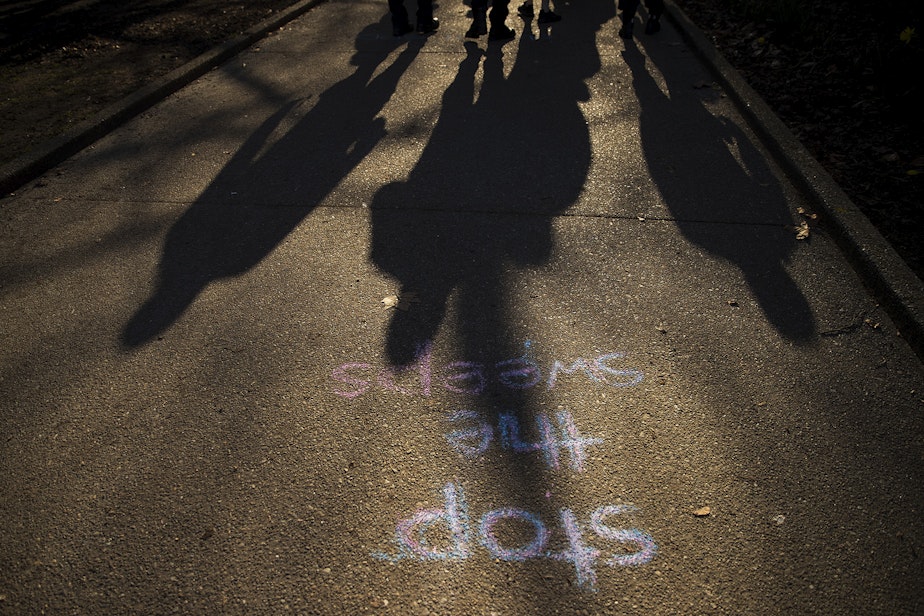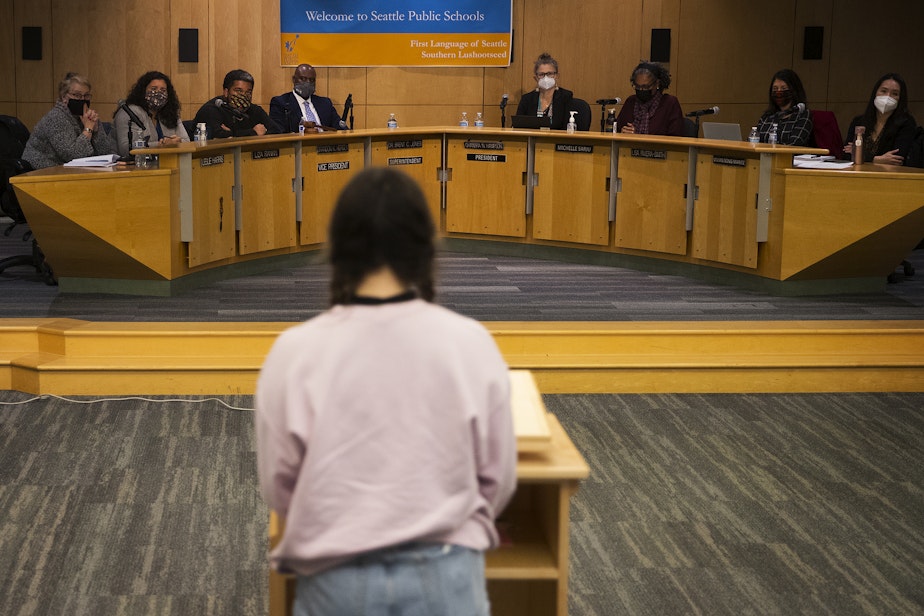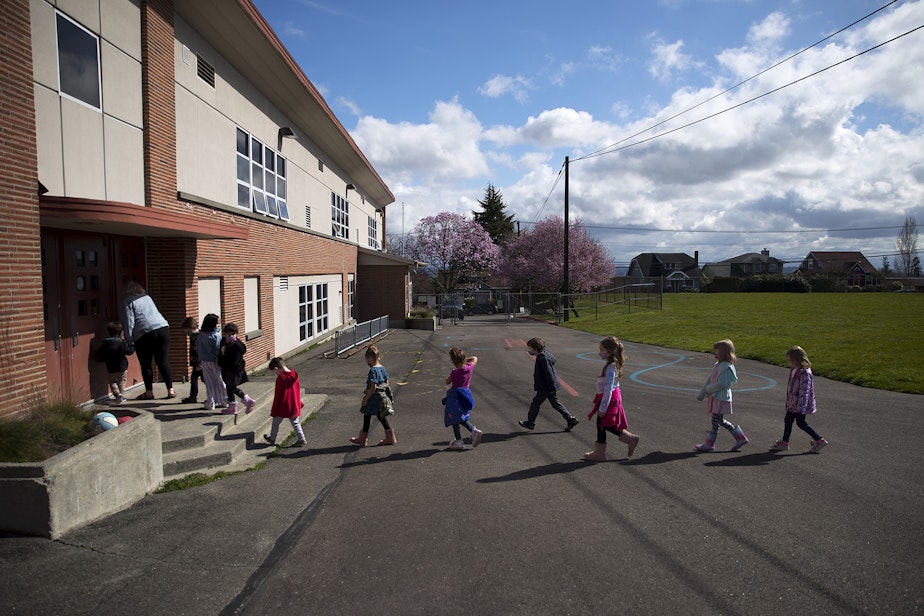2021: Looking back on the year, in pictures
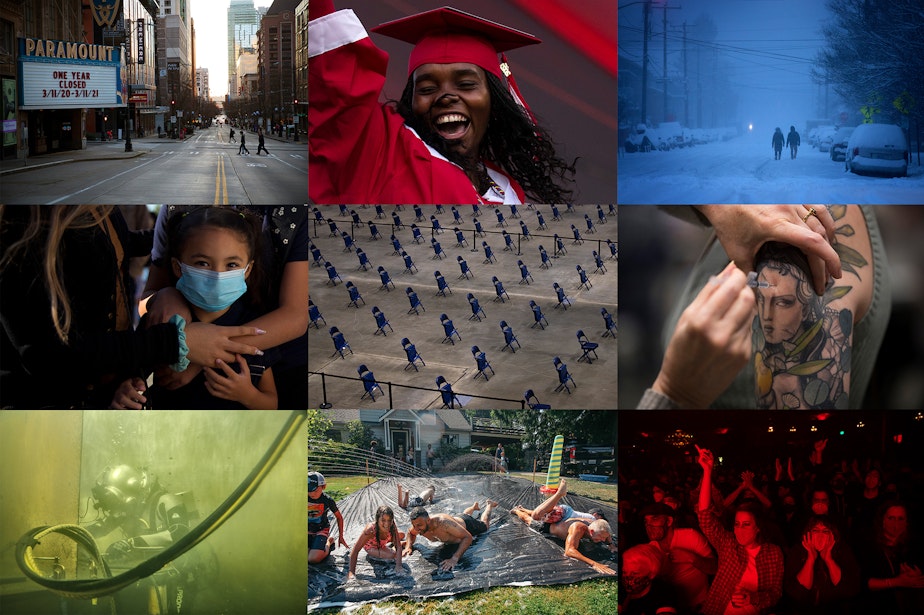
The story of 2021 began on a hopeful note in the greater Seattle area, with the promise of vaccines after a devastating year of Covid. This year would be a light at the end of the tunnel — or so we thought.
H
ope turned quickly to trepidation as the January 6th insurrection at the U.S. Capitol and subsequent threats against state capitols across the country followed. In Olympia, the Washington State Capitol Building turned into a secure fortress. Seven hundred and fifty National Guard members were at the ready as protesters armed with AR-15s gathered ahead of the legislative session.
In February, a snow storm put thousands of people living outdoors at risk. The next month, and throughout the entire year, everyday Seattleites pooled their resources and attempted to plug holes in a system that leaves thousands in the city without shelter or basic necessities. These efforts, referred to as mutual aid, are independent — they’re not tied to the city or any particular organization.
As vaccine access expanded, families began to reunite with one another after months of separation. Grandparents were able to meet their grandchildren for the first time. Students returned to in-person classes, and in June, Seattle area high-school seniors graduated together in-person.
The year also brought significant weather events to the Northwest: record-breaking heat in June, catastrophic flooding in November, and in December, the lowest temperatures recorded in the Seattle area since the mid-20th century.
Toward the end of the year, more than a thousand teenagers in King County protested their school districts, saying administrators are slow to investigate cases of sexual assault, resulting in some victims being stuck in class with their abusers. This generation is saying, “Enough is enough,” said Nicole McNichols, an associate teaching professor in Psychology at the University of Washington.
The hopeful note that the year began on was in sharp contrast with the way that the year ended. The omicron variant of Covid-19 is driving the highest surge of cases King County has seen since the start of the pandemic. Health officials warned that the sharp rise in positive cases “could lead to a situation where life-saving and hospital care is denied to those who need it.”
Health officials have predicted that January 2022 will bring the highest infection rates ever seen during this pandemic. But some say they’re optimistic that this wave won't be as deadly as others.
Dr. Ashish Jha, dean of the Brown University School of Public Health says he remains hopeful that 2022 will usher in the final chapter of the pandemic for many people.
"There will be a day – I suspect in 2022 – when most...realize that they haven’t thought about covid in weeks," Jha said Wednesday in an interview with NPR's On Point. "And that’ll be the day that the pandemic is over for them. And that doesn’t mean covid will be gone. But each wave has less and less of an impact on how many people it gets really really sick and kills."
The below images were taken by visual journalists Megan Farmer and Genna Martin in 2021.
